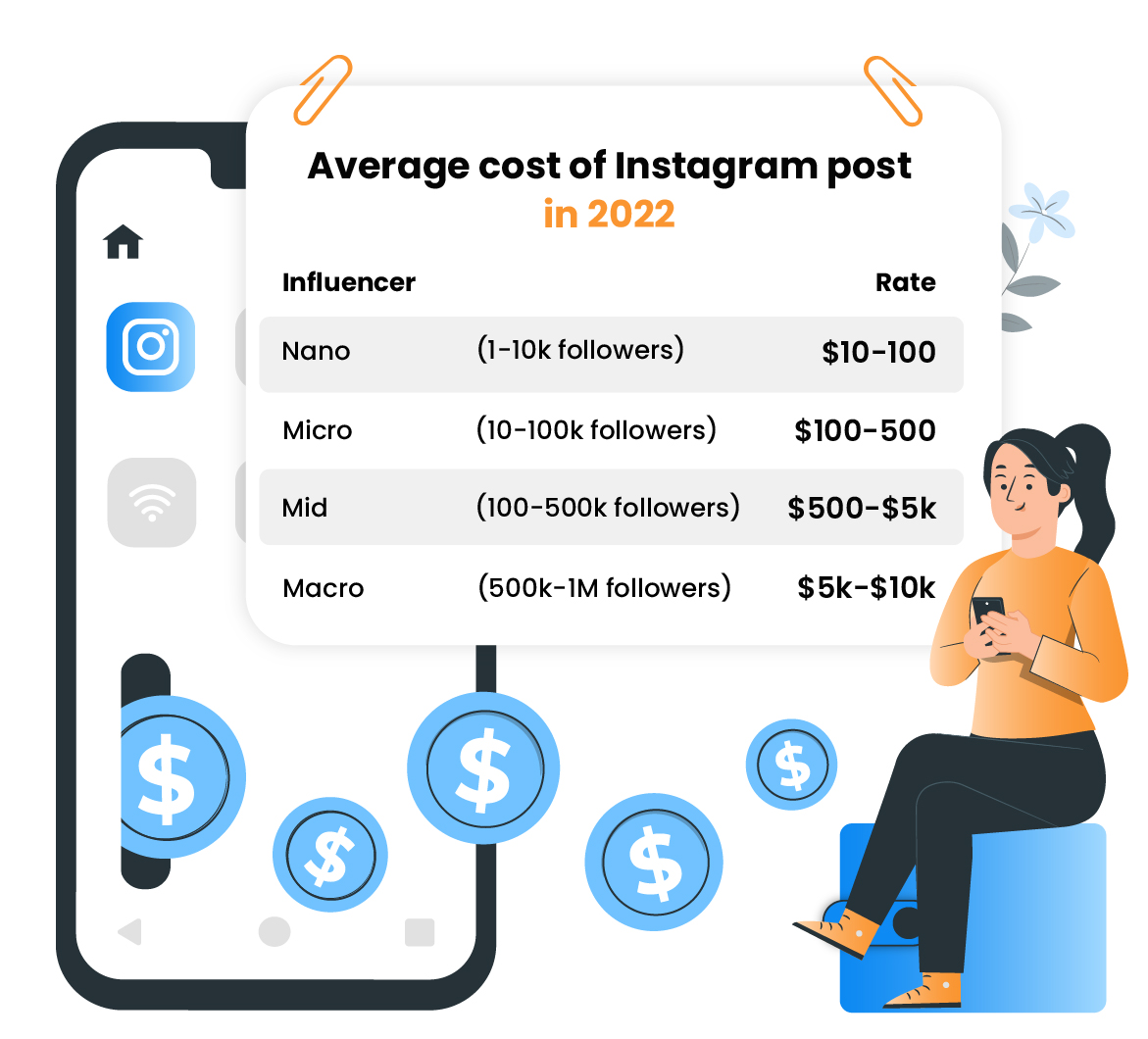
How much money can you earn as an affiliate marketer?
Commission rates are what usually motivate affiliates. But how much money can they really make? Read this article to find out.

Learn how to determine the right payment for your affiliates with tips on commission models, industry standards, and key financial considerations to keep your business and partners satisfied.
The main reason why affiliate marketing is becoming so popular is the general consensus that it is a low-risk and low-cost option. In this article, we will focus on the financial aspects of affiliate marketing. We will share some tips on how much you should pay your affiliates so that both sides (your affiliates and you) are satisfied.
According to BloggingX, 81% of brands and 84% of publishers already use affiliate marketing. But what about affiliate payments? Are all of these vendors and affiliates satisfied with the cost of affiliate marketing and their commissions? What affects their opinions? You will find the answers to these questions (and more!) below.
Establishing the right payment amount should be preceded by research. Proposing a fair salary to an affiliate can make a huge difference to your cooperation’s quality, and even be a decisive factor in their decision to work with you. And that is why it’s essential to compare your planned commissions with those of your competitors. Having a reference point will make it much easier for you to set your rates correctly at the beginning of your cooperation.
Remember that there are different payout models, such as PPC and PPS, etc. Not every affiliate will be willing to collaborate using the same payment model. You have to decide if you’re going to look for various affiliates regardless of your preferred payment method, or if you want to unify the payout system for everyone and choose affiliates accordingly.
To make your life easier, we checked out some examples of different commissions from various industries. If you operate in one of the sectors mentioned in the article above, you may find some useful benchmarks there.
Technology providers such as Dell or IBM stand by the 1% commission, while Hifi.com pays 5% of each consumer electronic item purchased through an affiliate . When it comes to the big players like Amazon, the company pays 15% for each direct link. Another retailer, real.com, pays its affiliates 8%.
The clothing industry has its own commission standard, too. American Eagle Outfitters offers $0.20 per sale, while Birkenstock pays just 2%. One of the highest commission rates is offered by Henry and June, who pay their affiliates 12% per sale.
The financial services industry has also implemented affiliate marketing, with varying levels and methods of commission payouts. Capital One pays $25 per every newly referred cardmember, while ebank and BestRate pay commissions per click – the former $0.30 and the latter $0.50.
As you can see, even companies from the same industry offer different payment methods and rates. Why is that? Because these businesses and their operating models differ and work towards achieving different goals. So it is up to you to decide on the best commission rate for yourself and your affiliates.
When determining the commission amount, you should take four factors into account: competitors’ rates (mentioned above), margins, customer acquisition costs, and discounts/promotions. Since we have already covered competition rates above, let’s move on to margins.
It is the margin that largely determines how much you earn, and it is the same for your affiliates. If your profit margin is 15%, it is logical that you cannot offer a higher commission than that, like 20%, because you’d be losing money. So how do you choose the right commission percentage?
Firstly it should be lower than your profit margin, and secondly, it would be a good idea to define the minimum, median, and average gross profit margins for each product or item category, if not both. If you want to do this in detail, consider how complex your program is – how many products are advertised by affiliates and how often.
The next step should be to specify factors that might affect your net profit margin: the average return rate, promotional offers, or fees, etc. Once you know these values, you are one step closer to knowing your budget’s limits and what amounts of commissions you can afford to offer.
Regardless of your acquisition costs, you must keep earning money. Analyze your bottom line and decide whether you can afford higher costs.
Let’s assume that you can dedicate about 15% of your outlay to commissions. This does not mean that this must be the final amount of commission for your affiliates. Keep in mind that there are other customer acquisition channels you can leverage, and affiliate marketing shouldn’t be the most expensive one. Besides, it’s good to have buffer money on hand.
Remember to differentiate payments depending on the individual experience, engagement, and results of each affiliate. In this case, the Commission Groups offered by Post Affiliate Pro can come in handy. It will be much easier for you to differentiate your affiliates’ payments thanks to this feature. You can create commission groups based on product categories, performance, or junior and senior positions. With this feature, you can easily diversify payments and ensure that every affiliate will receive a fair salary.
Many merchants forget about it, but the costs of promotional actions also need to be included. If your shop offers, e.g., a 5% discount off of an initial purchase, you have to include this discount in your calculations. Do you add free samples to orders? How often do you organize sales promotions? Think about your fiscal year in terms of promotions and discounts, and think about your affiliates’ roles in such initiatives.
We know you want to encourage affiliates to do business with you, but offering commissions that are too high can actually throw people off. Why? The average person wants to develop their skills at work and receive higher pay over time. If you start by offering suspiciously “too good to be true” terms to affiliates, there will be no room to reward good performance with pay rises. Eventually, affiliates will be dissatisfied with their financial compensations and the quality of their work may deteriorate due to a lack of motivation. Alternatively, they will simply leave your affiliate program .
Bonuses are another scenario to be considered. It is worth rewarding those who deserve it? You should establish a bonus system for your affiliates, so you need a buffer for this. You won’t have one if you propose maximum commissions to your affiliates from the start. Sometimes less is more.
We already mentioned PPS and PPC payout methods. There is one more payout method to complete the big three, which is PPL. What’s the difference between them?
If you want to learn more about payment methods, you can read this article . You can also find descriptions of other less-popular payment methods.
This article is a set of guidelines and tips that should help you establish commissions with your affiliates. There are many methods to choose from, and we can’t tell you exactly how much you should pay your affiliates to keep everyone happy. Why? Because every business is different. There is no one size fits all answer. However, we hope that with these tips you will find the right commission amount and type of payment that makes your affiliates feel appreciated and keeps your business thriving.
An event in affiliate marketing refers to a specific action or occurrence that results in a commission being earned by the affiliate. This could include a sale, a click, a lead generation, or any other predetermined action that results in a conversion. Tracking and monitoring these events is crucial in affiliate marketing to ensure that affiliates are properly compensated for their efforts.
Affiliate commission rates are typically determined by considering factors such as industry standards, profit margins, customer acquisition costs, and the value of the desired action. Businesses often research competitors and analyze their own financials to set fair and competitive rates.
The most common affiliate payout models are Pay Per Sale (PPS), Pay Per Click (PPC), and Pay Per Lead (PPL). Each model compensates affiliates based on different actions, such as generating sales, clicks, or leads.
Yes, affiliate commissions can vary depending on the product or service being promoted. Higher-margin products or services may allow for higher commissions, while lower-margin items might have reduced rates. Some programs also use commission groups to differentiate payouts.
Regularly reviewing and adjusting affiliate payments ensures that your program remains competitive, aligns with business goals, and adapts to changes in the market or your financial situation. It also helps maintain affiliate motivation and satisfaction.
Lucia is a talented content editor who ensures the seamless publication of content across multiple platforms.
Discover how Post Affiliate Pro helps you set up fair, competitive commissions and manage diverse payout models for affiliate success.
Commission rates are what usually motivate affiliates. But how much money can they really make? Read this article to find out.
Discover 14 actionable affiliate marketing tips to optimize your strategy. From analyzing the market and choosing the right niche to leveraging video content an...
The data from your affiliate campaigns is a goldmine of information. Learn actionable ways to optimize your campaigns, including traffic, content, offers, and l...





